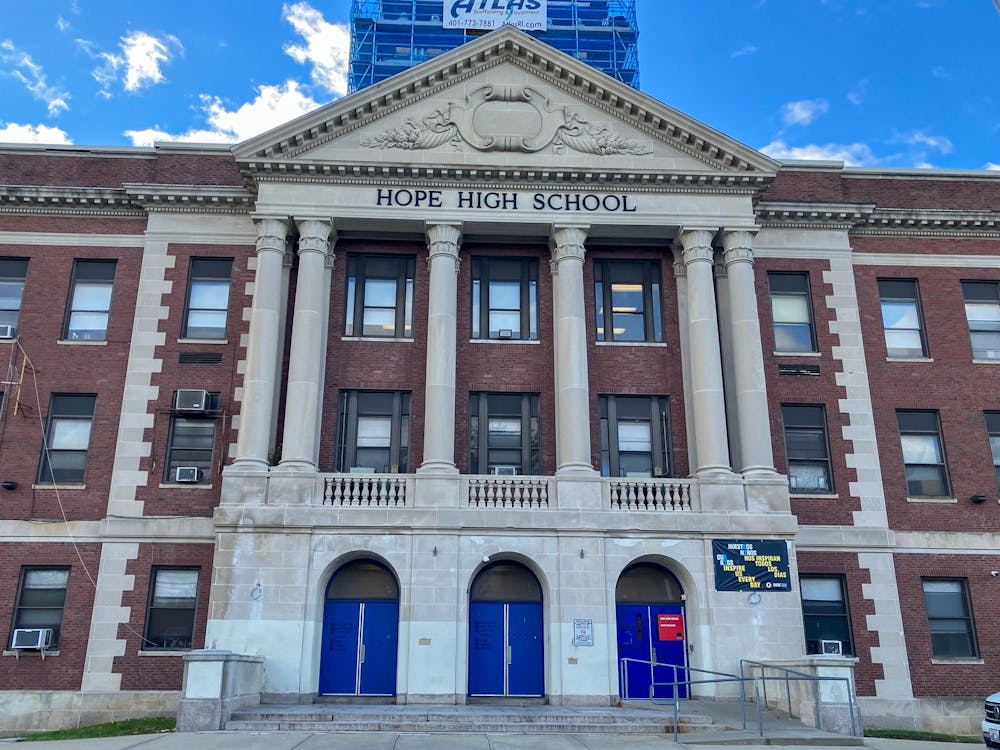On March 11, the U.S. Department of Education announced that half of its staff would be placed on “administrative leave.”
Nine days later, Trump signed an executive order stating that Secretary of Education Linda McMahon must “take all necessary steps to facilitate the closure of the Department of Education and return authority over education to the States and local communities.”
But McMahon said in a press release that “closing the Department does not mean cutting off funds from those who depend on them,” adding that the Education Department will “continue to support K-12 students, students with special needs, college student (loan) borrowers and others who rely on essential programs.”
Still, “the proposed changes will impede the work of the U.S Department of Education and undermine invaluable federal expertise and support that students, teachers and school leaders across our state and nation rely upon every day,” Rhode Island Department of Education Commissioner Angélica Infante-Green shared in a press release last month, referencing the executive order aimed at dismantling the department.
According to Kenneth Wong, a professor of education policy, international and public affairs and political science, the Trump administration, without Congress, “cannot unilaterally dismantle” educational programs like Federal Title I, special education student support programs, college financial aid and the Pell Grant.
Title I provides supplementary funding “for low-achieving children, especially in high-poverty schools,” according to the Department of Education website.
Despite this, Wong shared that the federal government can still impact the Providence Public School District in many ways, such as removing funding streams. “The federal government can use its funding power to change major initiatives in Providence public schools,” Wong said.
According to Infante-Green, $275 million of the state’s education spending is provided by the federal government, which is equivalent to 15% of the state’s education budget. A similar amount is included in Gov. Dan McKee’s proposed fiscal year 2026 budget.
Currently, the Trump administration is attempting to reallocate certain programs to other agencies and reorganize those programs’ funding and staff. For example, Special Education programs will be overseen by the Department of Health and Human Services, while the Small Business Administration will administer student loan programs. Both programs were previously overseen by the Education Department.
Wong explained that the Education Department division tasked with civil rights compliance and enforcement has seen significant staff reductions. With the downsized civil rights division, Wong anticipated that the “federal response to parental and student complaints on equal access in educational programs will be substantially delayed.”
Wong also noted the gravity of federal cuts in data collection, stating that it would “create a gap for school districts to benchmark their academic progress and reduce the level of university involvement in supporting data systems.”
“The confusing part is, when you give these functions from one agency to the other … they have their own culture and vision (which) may not be completely in alignment with the priorities of the education program,” Wong said, emphasizing how this shift in leadership can “create a degree of uncertainty going forward.”
The student loan portfolio for the Department of Education will be handled under the Small Business Administration. Wong expressed concerns regarding the extent to which the SBA “will fairly provide timely support to all eligible high-needs students (in accessing) post-secondary opportunities.”
In a 2023 Rhode Island KidsCount Factbook survey, 78% of PPSD students identified as low-income.
Miro Meek, an 18-year-old student at Classical High School and member of the Providence Student Union, called the dismantling of the Education Department and nationwide cuts to education funding “very concerning.” Meek added that many of his peers have recently changed their university plans in fear of student loans being removed.
The PPSD’s college matriculation rate of 55% is already lower than the state average, which sits at 68%.
To combat concerns over student loan funding, Wong proposed that the PPSD should create a timeline with better planning to ensure students start to apply for financial aid earlier. Wong hopes this would prevent application delays through technological platforms that have seen difficulties since the Trump administration’s dismantlement of the Education Department.
Despite these long-term impacts, Wong said that funding — particularly for Title I and special education programs — is mostly protected via Congress, “so unless Congress acts to eliminate those programs, funding will come through.”
But despite some of these reassurances, several community members within the PPSD referenced an atmosphere of uncertainty within the future of education.
“As a student activist, I feel like I’m witnessing a lot of fear,” Meek said. He described how among student organizers, “there’s a lot of people who are feeling like this is worse than they could have imagined.”





